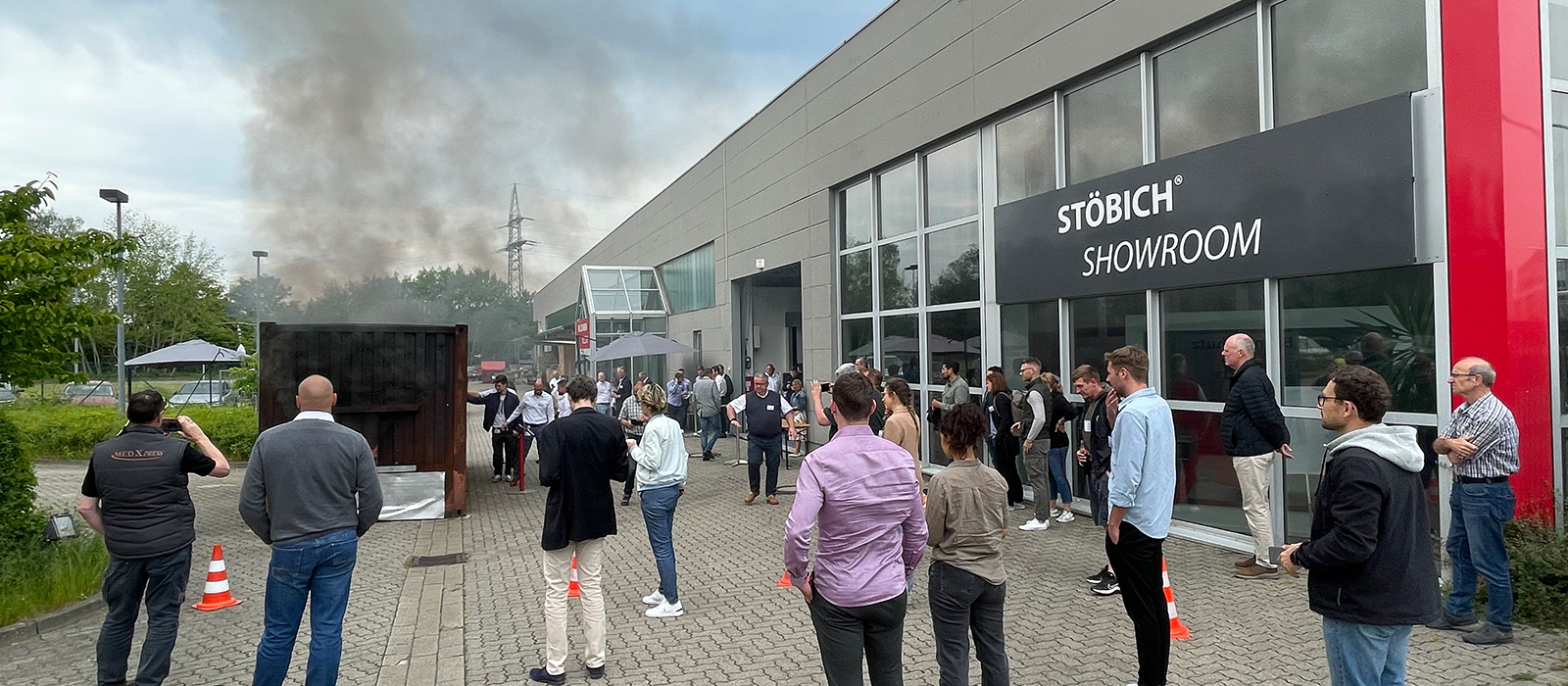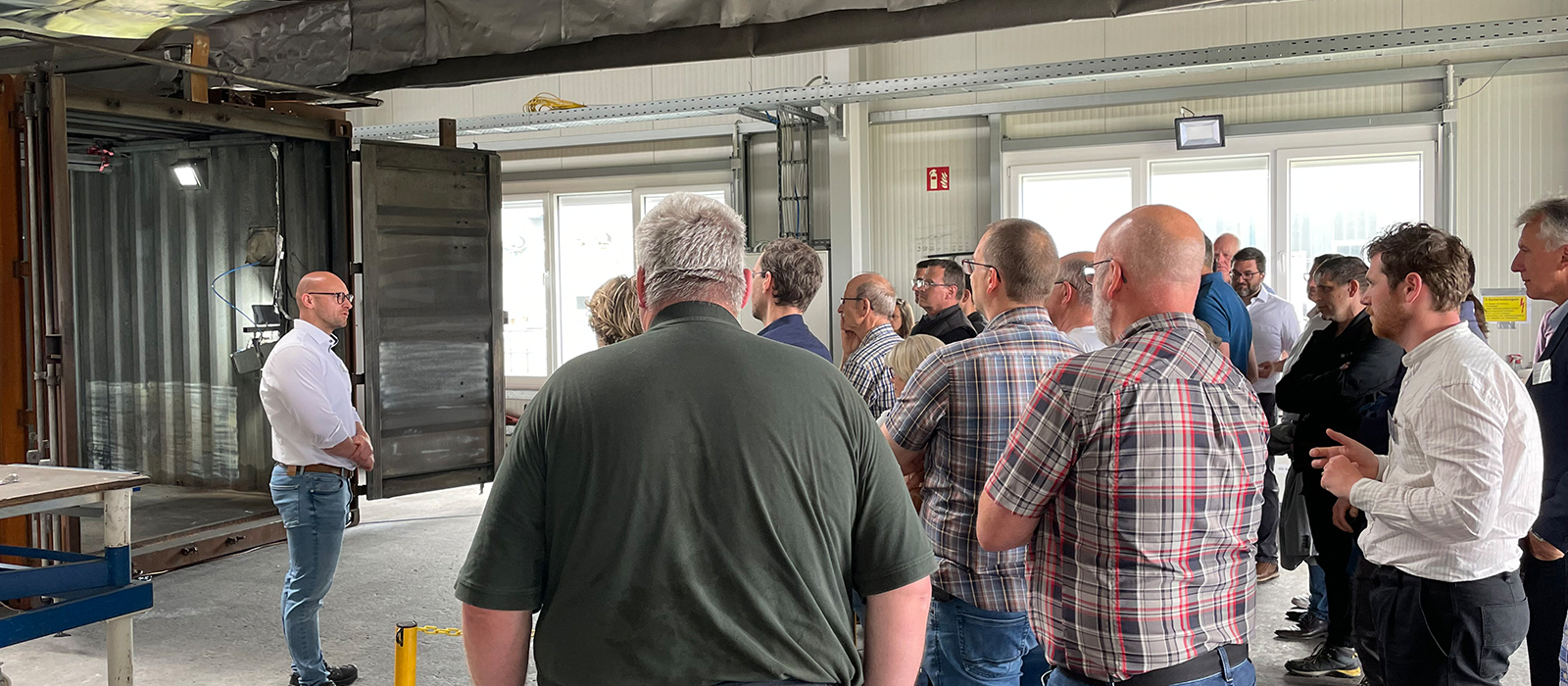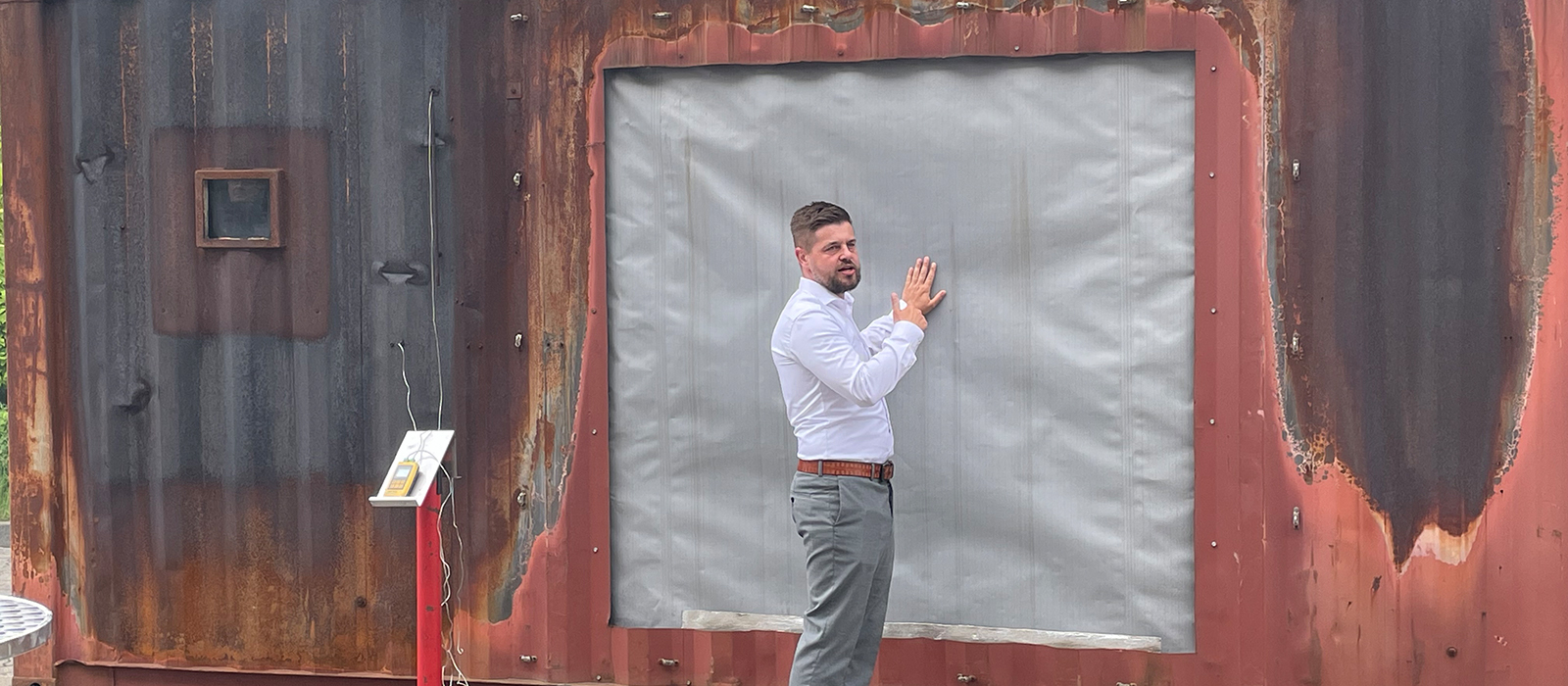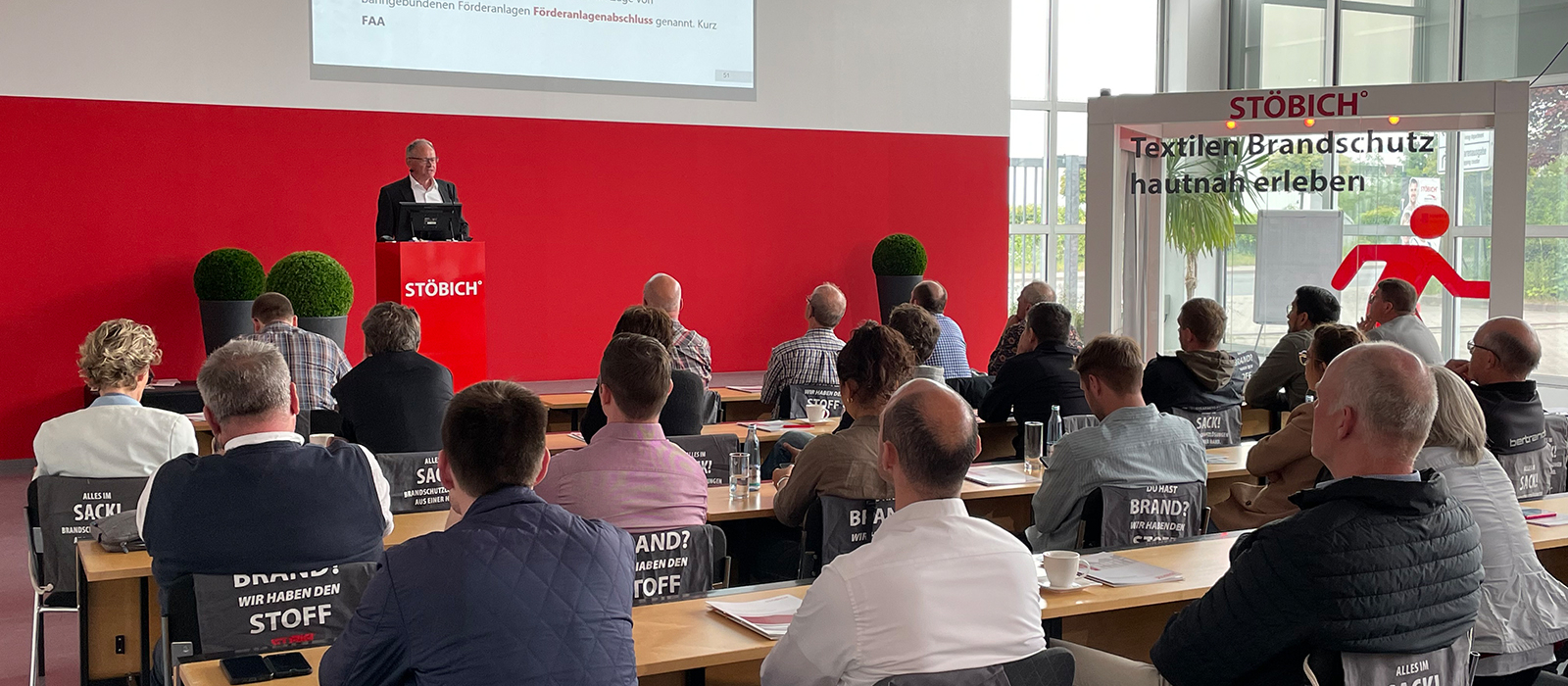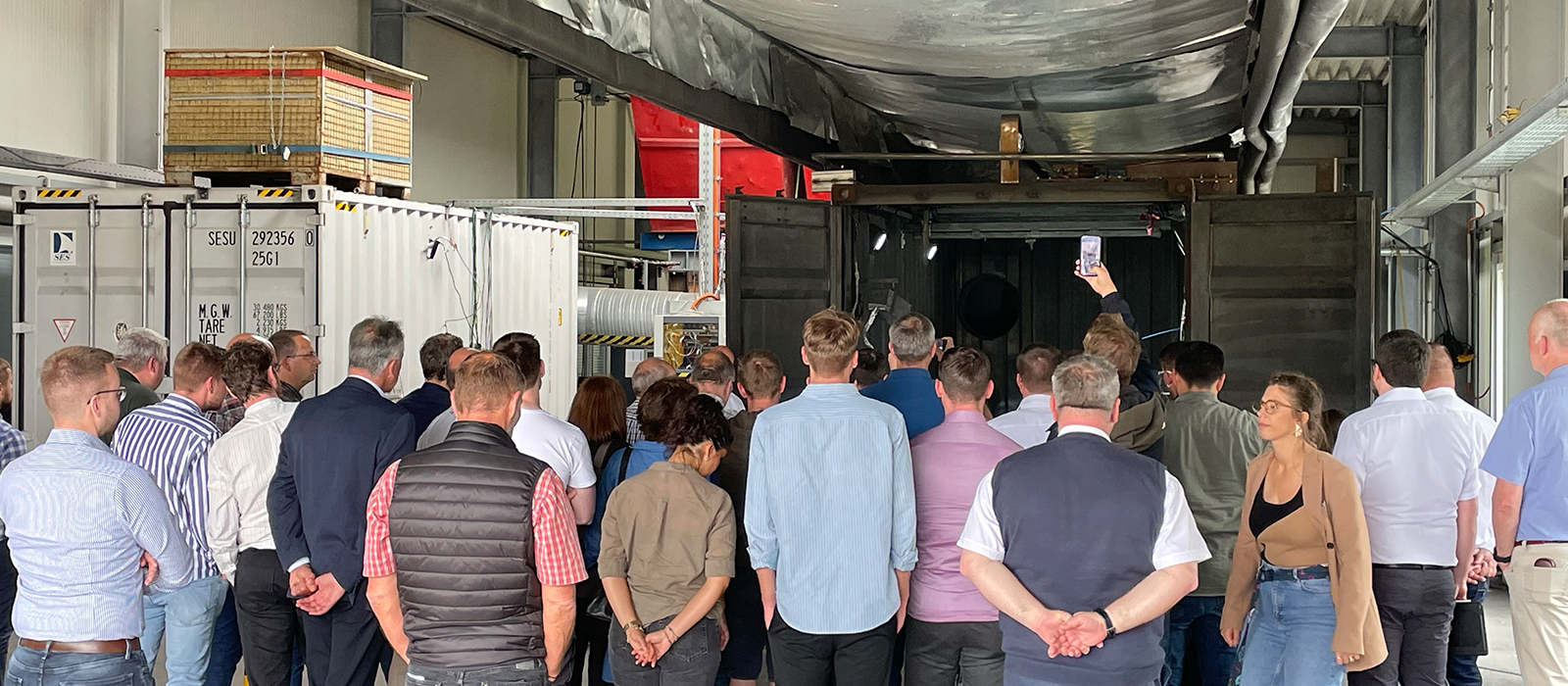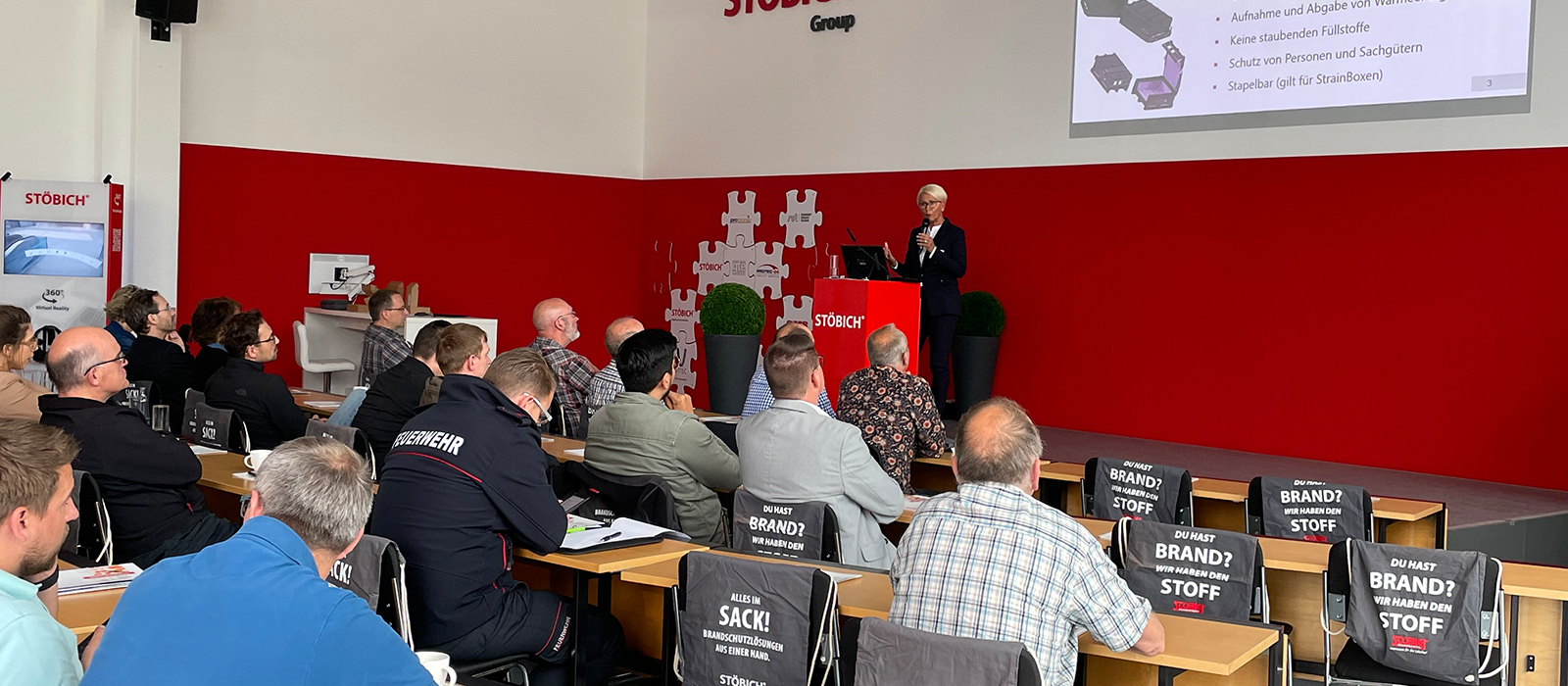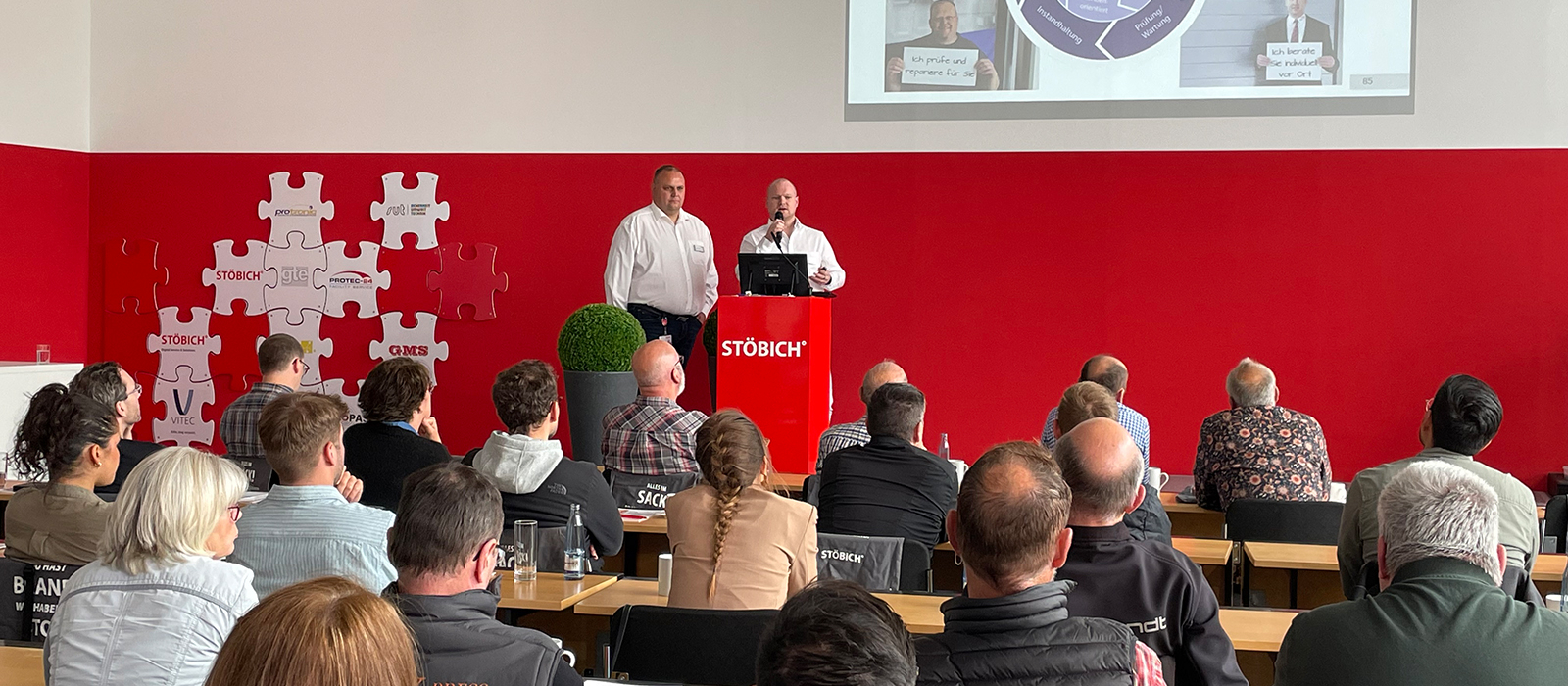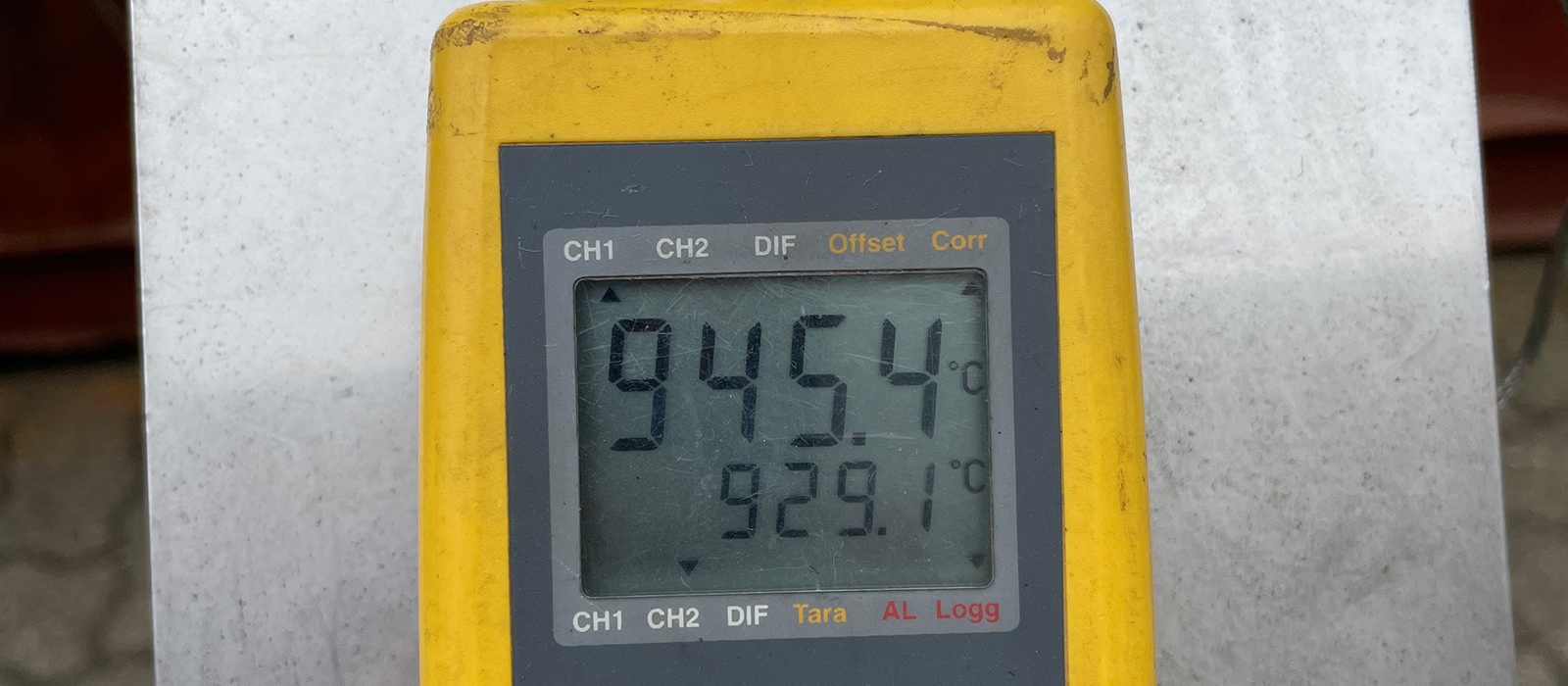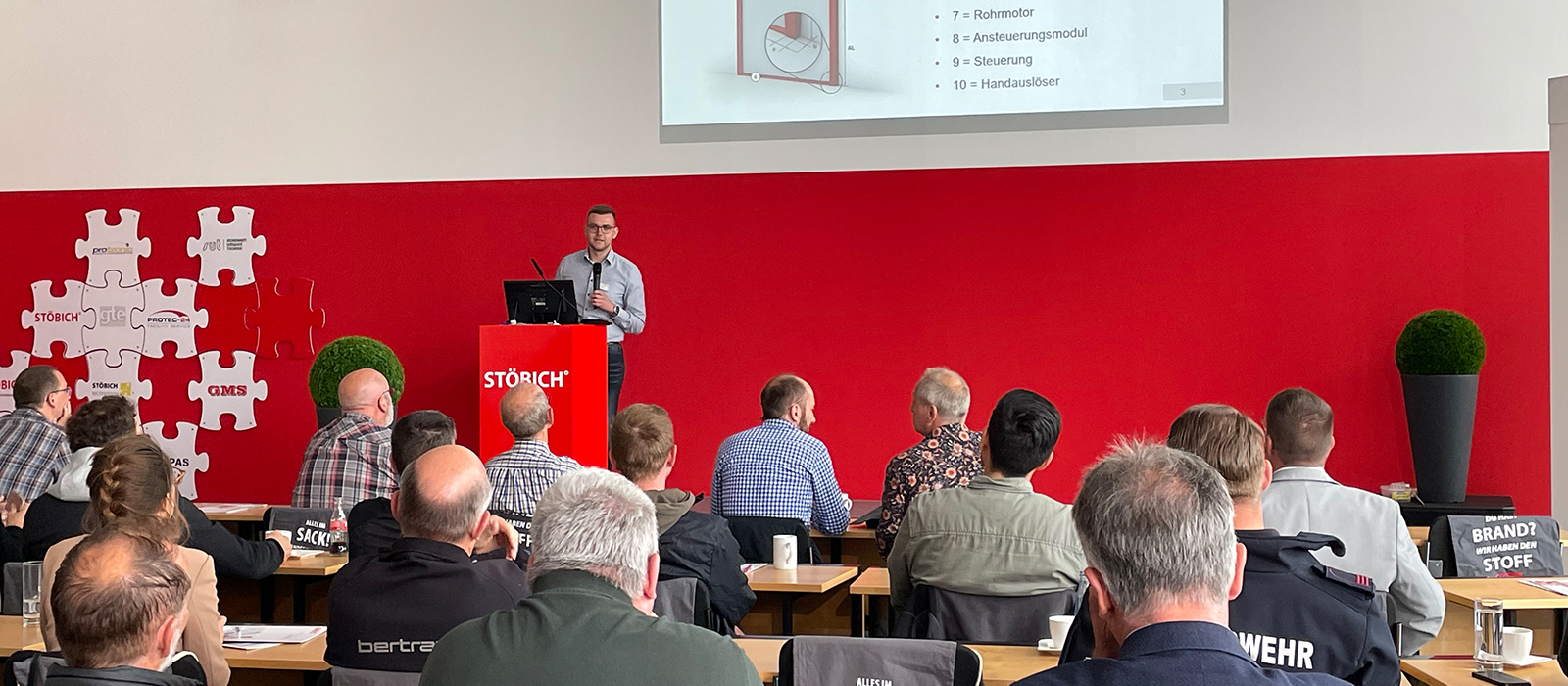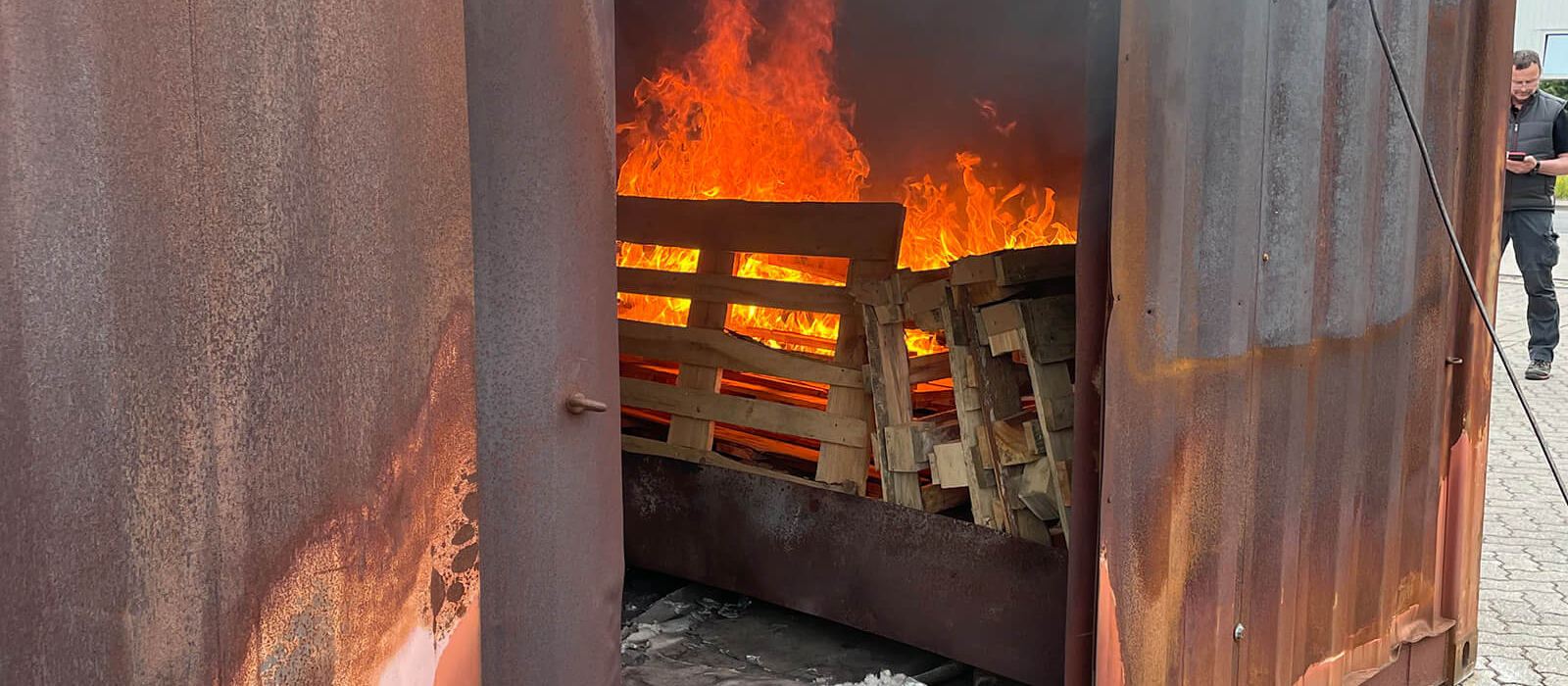
Fiery programme at the STÖBICH Fire Day
On 06.06.2023 it was a hot day at the central STÖBICH site in Goslar. Our popular fire day was very well received by the 40 or so people interested in fire protection from building inspectorates, fire protection services, general contractors, operators, etc.
It was a fireworks display of holistic fire protection topics, consisting of preventive ➥ structural fire protection with expert service, ➥ technical fire protection and ➥ fire protection for energy storage. At the STÖBICH Fire Day we gave all visitors exclusive insights into our product and service portfolio. Our expert speakers brought the audience up to date with exciting presentations. In between, there was the opportunity to expand one's own network and to get to know fire processes in real fire tests. How does the heat-insulating textile of the Fibershield®-I fire curtain feel when flames of up to 1,000 degrees Celsius strike it? At the fire test container, the participants were able to try it out for themselves and see for themselves how the innovative fire protection system works. Hot, live and in colour was also the battery test, in which a Li-ion battery had an accident in a controlled setting.

